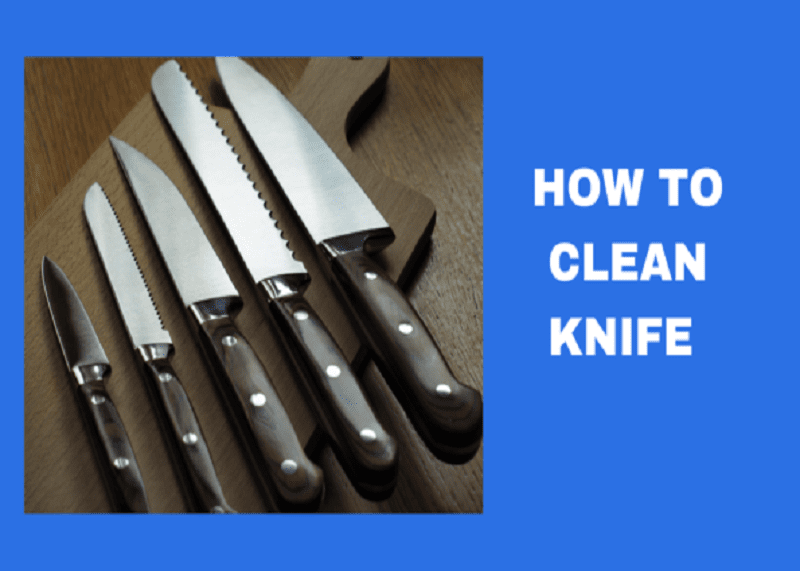How To Clean Knife? Knives of all types need to be regularly cleaned to keep them sharp, Rust-Free, & free of bacteria. They need special handling & care, depending on the type of knife and their various uses.
You May Also Like:-
- Best Anti-Fatigue Kitchen Mat
- Best Sleeping Bag For Camping
- Best Soft Cooler
- Best Santoku Knife
- Best Kitchen Utensil Sets
- Best Valet Tray
- Best Tire Cleaner
- How To Clean A Sword With Household Items
- Does Damascus Steel Rust
- Best Pocket Knife for Kid
- Best Folding Knife Under 100
- Best Japanese Knife Set
Easy Way How To Clean Knife or Remove Rust From Knife
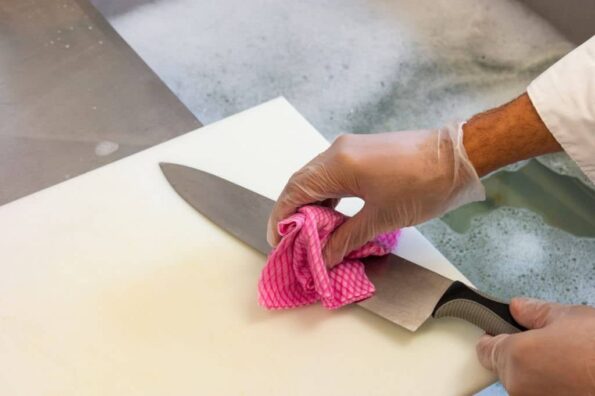
How To Clean Knife or Remove Rust From Knife
1. After Using The Knife, Wipe It Clean Immediately
Wipe the knife clean right after each use. Kitchen knives will be harder to clean if you allow debris to get stuck on them. After using a knife, quickly run the knife underwater.
Allow any food or debris to brush off and drain down the sink. If there’s anything stuck on the knife, quickly wipe it down with a sponge or dish towel. Set the knife aside until you’re ready to do the dishes.
2. Clean With The Blade Pointing Away From You
Make sure the blade is pointing away from you when cleaning. Once you’re ready to clean the knife, use basic dish soap. Be cautious to clean the knife with the blade facing away from you to prevent damage.
- Lather a sponge in warm, soapy water. With the blade pointed away from you, carefully clean the knife until you remove all food and stains.
Be cautious not to scrape too rapidly. If you clean forcefully or rapidly, the knife might slide and you could wind up being cut. Some folks feel more comfortable resting the knife on a level counter surface and washing the sides one at a time. This may make harmless probable.
3. Soak The Knife For A Minute or Two If Food Is Stuck On
Dip the knife for a minute or two if the food sticks to it. Sometimes, food will wake up trapped in the kitchen knife despite your best efforts. In this case, dip the blade in shallow water for a minute or two.
After this, you should be able to clear the food. Do not soak the knife for more than a minute or two as this may cause rust.
4. Dry The Blade
Continuously wipe your blade with a dry, clean fabric following cleaning. Blades ought not to air dry as this would cause erosion. Dry the blade with the sharp edge pointing away from you, definitively as you did while cleaning the blade.
Precautions And Material Use: How To Clean A Rusty Knife
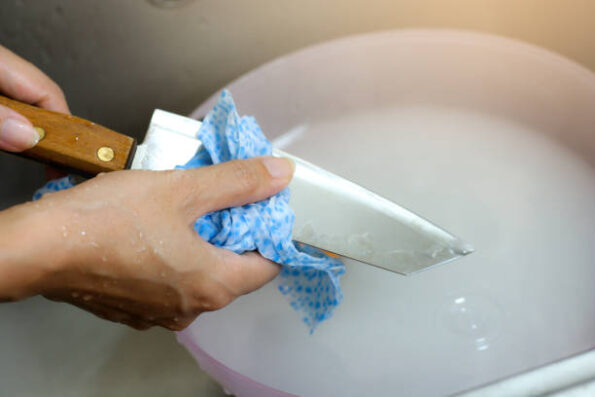
How To Clean A Rusty Knife
It is to clean a carbon steel knife blade with water but you must take specific steps to decrease the appearance of rust and other stains that may occur over time. Here are some recommendations for preserving a carbon steel kitchen knife:
- Never let it soak in water
- Do not use soap of any type
- After washing the knife with a moist sponge wipe the blade immediately with a clean, dry towel
- Never let it air dry
- Store it in a dust-free drawer or knife block
MATERIAL USE
The best and most effective way I have been to get rid of rust on a carbon knife is baking soda and a common scrub pad.
First, clean your knife blade with a non-abrasive cleaner solution and fabric. Try to avoid using water to clean your knife blade, but if necessary, use water sparingly and dry thoroughly afterwards.
If there is moisture left on the blade from the water purifier, the chances of getting rust on your knife blade increase significantly.
After your knife is clean, mix a small amount of baking powder with a little water to make a light dough.
Put your knife in place and use baking soda paste on one side of the blade. Depending on the size of the reaction on your knife, wait between 5 and 30 minutes before proceeding to the next step.
Once you are ready, use your cleaning pad or steel wool and scrub the side of the knife that has the baking soda paste on it.
Renew supplementary paste as considered necessary until enough rust has been wiped off. Once you are pleased with one side, turn the knife over and perform the same technique on the opposite side of the blade.
When you have cleaned both sides of the knife blade and all the rust has been scraped off, wipe the whole blade with a towel to remove any rust particles and leftover baking soda paste.
Apply a small layer of mineral oil to the blade of your knife for added protection and general excellent health of your knife blade. Wipe off any extra oil before moving on. After washing the blade down, I urge you to resharpen your knife since scouring your blade with abrasive chemicals will badly dull your knife.
1. Baking Soda
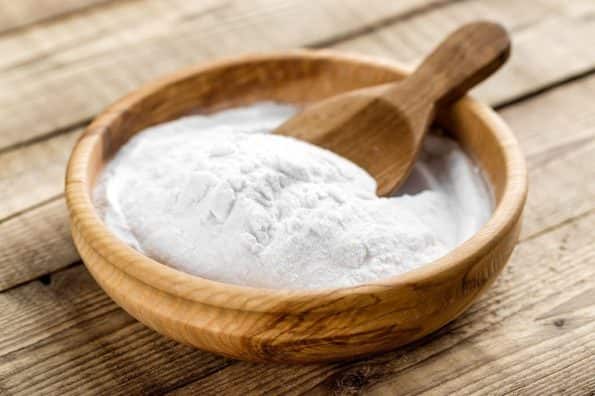
Baking Soda
The best and most effective way I have been to get rid of rust on a carbon knife is baking soda and a common scrub pad. This remarkable stuff constantly surprises me, it appears the number of uses and applications are virtually unlimited.
So if you don’t already have any baking soda at home; go and acquire some. It will become helpful for this and many other future tasks in the family.
The benefit of using baking soda in this scenario is that it’s non-abrasive and it will not damage the natural grain of the material. It’s delicate to your knife and utensils.
2. White Vinegar
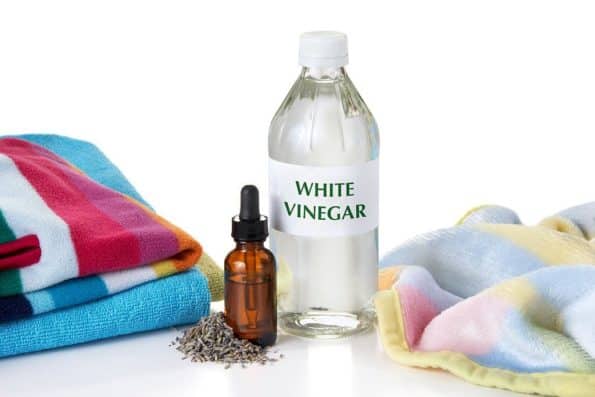
White Vinegar
White vinegar, just like baking soda, is a superhero. It contains acetic acid, which is effective against rust. Other sorts of vinegar may leave stains, so don’t use them.
For a few moments, soak your stainless steel piece in white vinegar. If you keep the knives in for too long, the knife blade may be damaged.
If required, rub the vinegar off; otherwise, rinse with clean water and dry. We recommend utilizing a second approach, such as baking soda, if there is any remaining rust.
3. Lemon Juice
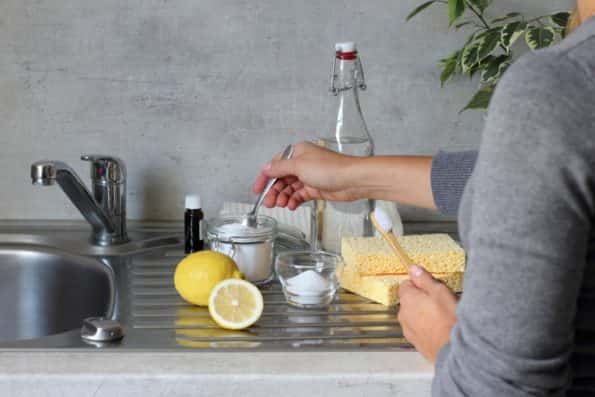
Lemon Juice
Lemon has enough acidity to clean stainless steel, especially when paired with a complementing chemical such as baking soda or salt. Some people are applying salt to the rust stain, then squeeze a lemon over it and let it for two hours.
The rest of the procedure follows the same steps as the previous techniques. You can also utilize the baking soda approach, but instead of water, lemon juice can be used to improve the effect.
4. Cream Tartar
“Tartaric acid” can also be used to eliminate rust. Combine with lemon juice and scrub with a sponge. Then, as is customary, rinse with water and dry.
5. Oxalic Acid
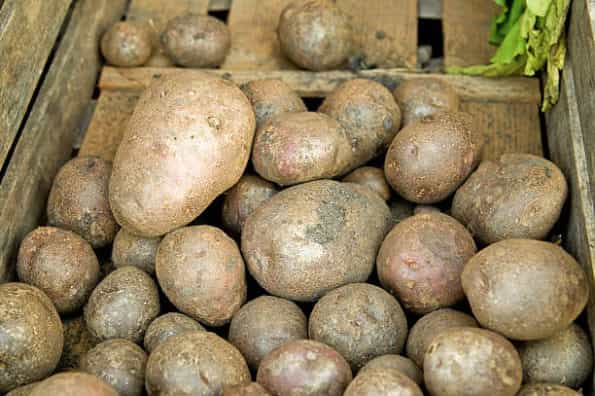
Oxalic Acid
As a rust remover for stainless steel, oxalic acid is completely safe. Larger items or stains, such as a rusted stainless steel pan, are more suited to it.
You can use it directly, buy a safe cleaning product that contains oxalic acid, or utilize the potato and dish soap procedure, which may sound like a grandmother’s tale.
Yes, you read that correctly. Potatoes, it appears, contain oxalic acid, which can be used to remove rust. Cut the potato in half and massage the open face of the potato on the stainless steel surface with dish soap and salt.
6. Citric Acid
Spray a citric acid solution straight onto the steel and wait a few minutes for it to work. After that, wipe, rinse, and dry. If any rust remains, use some elbow grease. Because citric acid might remove or damage other coatings, it’s not recommended for cleaning all types of stainless steel.
7. Phosphoric acid
This powerful chemical is especially effective against rust produced by carbon steel contamination. Please put on your gloves! Apply phosphoric acid using a sponge and then brush. You’ll need to neutralize and eliminate the acid using ammonia, then rinse the ammonia with water.
8. Cork
Restore shine to your kitchen knife blades by cleaning them with a cork. Weta cork with water then immerses the cork in ashes from a fireplace. Rub the blade with the cork and wipe it clean.
9. Turpentine
Using a turpentine soaked sponge is another effective way to clean a kitchen knife. It is very good at removing rust and white spots. The chemical properties of white vinegar are similar to those of turpentine; however, the latter should not be heated
10. Rust Prevention
The best way to wipe the rust off your knife is to prevent it from developing in the first place. There are a few excellent practices to consider and increase the life of your blade’s metal.
It all begins with basic treatment and upkeep. Store your pocket knives in a specific spot so they are not left out to be at the mercy of the elements: condensation, rain, snow, water, and sweltering summer days.
In a low humidity atmosphere, a gorgeous knife display case can flaunt your blade in all its brilliance while keeping it secure from any harsh climate. Storing your knife in a leather sheath for a lengthy period of time might transfer its absorbed moisture onto the blade.
- Clean or rinse your knife and dry it with a soft towel. Give it a quick wipe down after every usage.
Depending on the kind of steel your knife is made of, you might even use mineral oil to oil your knife down before putting it away. Oiling the blades puts a protective coating on carbon steel knives and is an essential aspect to guard against rust and corrosion.
Removing rust from your knife blades just became simpler. We hope these cleaning techniques will educate you on how to remove rust and clean your blades.
- Nowadays, there are numerous economical solutions to remove rust. Dish soap, lemon juice, salt, and perhaps a potato are among the most popular and typical techniques to remove rust.
They truly work too! If you used a technique that did not help remove rust from your knife, try again or work your way down the list.
The goods on the market, in addition to basic domestic hacks, maybe a miracle worker on that rusty red blade and bring it back to its glory days.

